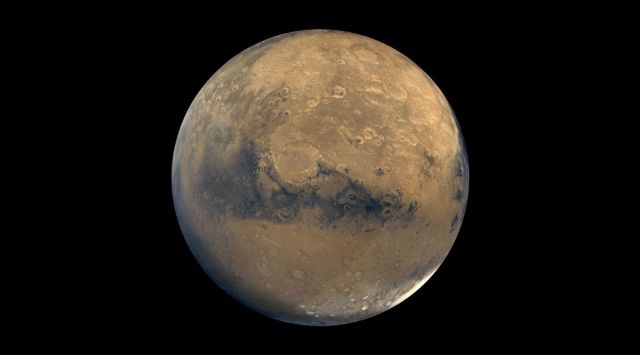Humans on Mars: Four ways in which these trips could prove risky
A manned mission to Mars will be unlike any journey humanity has ever undertaken. Here are the many ways in which a manned Mars mission could prove to be fatal.
 Here are the many ways in which a Mars mission can kill astronauts. (Image credit: NASA)
Here are the many ways in which a Mars mission can kill astronauts. (Image credit: NASA) When will humanity land on Mars? If you’ve seen the movie, ‘The Martian’, you would know that surviving on Mars will not be an easy task. And while space agencies like NASA and private space technology companies like SpaceX have talked about sending humans to Mars, the task has its own challenges. Mars is more than 99 million kilometres away — almost 250 times further away from our planet than the Moon. Plus, a mission to Mars will last 21 months or more, which is a long time for humans to spend in Space. But more importantly, Mars missions could also prove fatal to the astronauts who are part of these. Here are four ways why this could be the case.
1. The right rocket launch
Currently, there is no available rocket that can take a manned mission to the red planet. But chief contenders for this purpose include NASA’s SLS rocket and SpaceX’s Starship rocket. While the latter is still in testing, a version of the former has already launched the Artemis 1 mission. But the SLS rocket in its current form is not capable of carrying a mission to Mars, and will therefore have to be upgraded to suit the purpose. This means that any rocket that will carry out such a mission will be a much newer, more complex piece of machinery than ever.
And at the end of the day, any rocket is just a massive container of fuel that propels itself using a kind of controlled explosion. No matter how many tests and checks a launch vehicle has been through, if the explosion went out of control, the astronauts strapped to the large fuel container would definitely not make it out. For this reason, one of the biggest risks of a mission to Mars could be a launch malfunction.
2. Astronauts could die in transit due to various reasons
But the danger doesn’t end after launch either. Unlike a Moon mission, astronauts will have to survive the harsh atmosphere of space for as long as nine months. That’s the time NASA estimates will be needed to reach Mars. During this time, the spacecraft used must be well equipped enough to protect the inhabitants against radiation and other dangers of space.
We are protected from the harsh radiation of the Sun by Earth’s atmosphere, but this is not the case in outer space. Also, even if the spacecraft were designed to accommodate the normal amount of radiation expected in space, there is also a small chance that a solar flare erupting in the direction of the Sun could expose astronauts to much higher levels of radiation than they can survive.
The mission’s duration also means the spacecraft will have to carry much larger supplies of life support systems, including oxygen and water. If any of these critical systems fail or prove inadequate during the long journey to and from Mars, the astronauts will be left hanging dry thousands of kilometres away from the planet.
3. Landing on Mars
The challenges are not just limited to surviving the journey to Mars. Making a soft landing on Mars is a task that may prove equally difficult. Currently, only three countries—the United States, Russia and China—have successfully conducted a soft landing on Mars.
Mars has a much thinner atmosphere. There is less atmospheric friction on the spacecraft to slow it down. At the same time, the atmosphere is thick enough to heat the ship up to high temperatures.
Any spacecraft trying to land on the red planet will have to use complex systems involving parachutes, heat shields and other machinery to successfully land the astronauts on the planet in a safe manner.
Last year, NASA completed the technology demonstration of the LOFTID aeroshell technology, which could one day be used to soft land astronauts on Mars. But it will still be a long time before the technology is considered safe enough for human space travel.
4. The stay on Mars could kill astronauts
Earth and Mars orbit the Sun at different speeds, and the distance between the two planets keeps changing over the year. Due to this, missions to Mars should be conducted during launch windows where the two planets are closest, which happens once every 26 months. This also means astronauts who arrive on Mars might have to wait on the planet for a while before they can return, to ensure that the red planet and Earth are not too far away.
According to NASA, astronauts would have to wait between three and four months for the return trip. Just like how radiation was a threat to astronauts during their transit in deep space, they will also be highly susceptible to radiation on the Martian surface. The thinness of the Martian atmosphere means it cannot shield astronauts anywhere nearly as well as the Earth.
Also, the gravitational pull on Mars is only about 38 per cent as strong as that on Earth. It is not yet fully known how lower gravitational forces impact the human body, especially when exposed to this for a longer period. For example, an astronaut’s muscles will have to do much less work on Mars, meaning they will get weaker. According to the Canadian space agency, astronauts aboard the International Space Station must exercise for around two hours every day to counteract the adverse effects on their muscles. The heart is also a muscle. Due to the lower gravity on Mars, the heart will not need to work as hard as it does on Earth. This could also negatively impact astronauts, who spend long durations on the Red planet.







